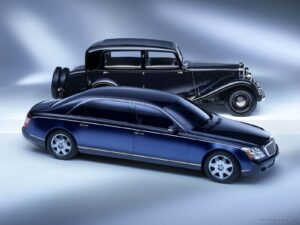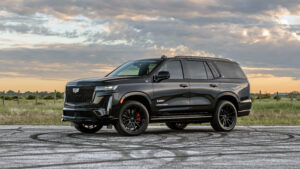Build Quality
One of the major factors taken into account in determining the overall value of the car, along with all other factors, is its build quality. It consists of materials, workmanship, and engineering to build the car. High standard build quality provides the durability, safety, comfort, and performance, which are all major decisive factors for any buyer. This paper discusses various parameters regarding the build quality in cars and why it is an important requirement in specifications of the cars.

What is Build Quality?
Build quality refers to the level of construction and materials that go into making a vehicle. This includes fit and finish of components, solidity of the chassis and body, and the quality of the materials used in the interior. Some of the areas where build quality can be observed in a vehicle include:
- Exterior Construction: The strength and alignment of the body panels, the quality of paint, and the robustness of items like the headlamps and door handles.
- Interior Construction: The quality of the materials used for seats, dashboard, and trim, and how well these components inside the interior fit and finish.
- Mechanical Components: Durability of an engine, transmission, suspension, and other such mechanical components
- Electrical Systems: The reliability and integration of a vehicle’s electronic systems
Types of Build Quality in Cars
Economy Cars
Economy cars are designed with the two goals of being inexpensive and having low fuel consumption. Most of them will use simple materials and construction methods to cut down costs.
Characteristics
Materials: likely uses hard plastics and basic fabrics in the interior with thin steel or aluminum on the exterior
Construction: less complicated construction and fewer high-tech components
Durability: durability is overall lower compared to higher models, though most economy cars today are slowly getting stronger
Why It’s Important
Economy cars provide reliable transport at a lower cost for budget-conscious buyers. Comparably, the build quality may not be as high as the luxury or mid-range vehicles; manufacturing has progressed significantly to ensure durability and increased safety of these cars.
Mid-Range Cars

Mid-range cars give the right balance between affordability and quality. They will provide more superior material and construction compared to economy cars but without the associated high costs of the luxury variety.
Characteristics
Materials: In general, this class of vehicle receives better plastics, along with superior fabrics and some soft-touch materials for the interior. More hard-core materials are used on the exterior and finished much better.
Assembly: More complex construction methods and better fit and finish.
Durability: Much better durability with improved engineering and superior component quality.
Why It’s Important
Mid-range cars represent a good step up from economy cars in terms of build quality, comfort, durability, and looks. They hence are good value for many buyers who want a tradeoff between cost and quality.
Luxury Cars

The objective of luxury cars is to combine maximum levels of comfort, performance, and looks. They come with the best materials and superior engineering, hence ensuring an extraordinary driving experience.
Characteristics
Materials: Luxurious interior material accompaniments include leather, wood, and metal trims. Thicker steel, aluminum, and sometimes carbon fiber is used in the exterior.
Construction: The construction will combine meticulous engineering with high-tech techniques and attention to details.
Durability: Very tough, superior engineering, superior components.
Why It’s Important
Luxury cars are, in effect, the gold standard when it comes to build quality. Literally, they possess the best comfort, safety, and durability available. This is due to refinement being a prime expectation by the customer, which the manufacturers provide through the finest materials and quality of construction.
Sports Cars

Sports cars are optimized for performance and handling. Their build quality stresses lightweight materials and precision engineering so that it enhances speed and agility.
Characteristics
Materials: Lightweight materials such as carbon fiber, aluminum, high-strength steel. At the same time, interior materials, in most cases, are equipped with sporty trims and elite material use.
Assembly: Sophisticated building procedures that ensure rigidity and lightness.
Durability: Strong durability, in terms of mechanical components, which are subjected to a high degree of performance.
Why It’s Important
The quality comes along with the performance for a sports car. The sports car should have lightweight yet strong materials and precise engineering so that it could achieve high speed under great handling characteristics.
SUVs and Trucks

SUVs and trucks are utility, durability, and often off-road-capable vehicles. The construction is oriented to be solid and rugged.
Characteristics
Materials: Robust materials, with high-strength steel utilized for the frame, with robust plastics and fabrics in the interior
Construction: Solid and sturdy construction methods to hold up to the heavy use
Durability: Very durable, with a design to take elements that would easily ruin a lesser vehicle
Why It’s Important
For SUVs and trucks, good build quality will keep the vehicle running through hard use and harsh conditions. Such a vehicle should be able to handle heavy loads that buyers would expect, bear off-road conditions, and assure long-term reliability.
Why Build Quality is Important
Durability and Longevity
High-quality construction ensures the vehicle is able to bear all kinds of daily uses and go on for years. Durable materials and strong construction reduce the probability of wear and tear, hence reducing repairs and replacements.
Safety
A well-built car ensures better safety in case of an accident. Good quality raw materials and methods of construction enhance the structural integrity of the vehicle, thus enhancing safety to the occupants of the vehicle.
Comfort and Aesthetics
This makes a huge difference in terms of comfort and aesthetic appeal inside the vehicle. Luxurious materials and accurate construction methods result in a far more enjoyable interior and a beautiful appearance. The driving experience as such becomes much better, which leads to long, delightful journeys.
Resale Value
High build quality is also associated with better value retention for cars over time. Customers willingly pay a premium for vehicles that enjoy a good reputation for being long-lasting and reliable. A secondhand car in good condition and which has better build quality may attract a premium resale price.
Performance
The build quality of mechanical components determines the performance of a vehicle. The absence of failures and the ability to work more efficiently due to high-quality parts contribute to higher performance and reliability.
Customer Satisfaction
High-quality construction will irrevocably result in increased customer satisfaction. Owners with well-built cars have few problems and will be more loyal to that brand name, which enhances the manufacturer’s reputation by possibly increasing their sales and market share.
Build Quality Assessments

Material Quality
Check the interior material of the vehicle. Materials of good quality, like quality plastics, fine leathers, and metals, will indicate that the car is durably built. Look for solid, well-finished surfaces with no rough edges or gaps.
Fit and Finish
Check the fit and finish of the car. The well-aligned body panels, tight seams, and constant gaps all reflect good build quality. Inside the vehicle, check for uniform stitching, secure fittings, and the smooth operation of moving parts.
Engineering and Design
Notice the engineering and design of the car. The superior engineering methods together with careful attention to design assure a high build quality. Look for reinforced frames, precision-engineered parts, and innovative construction methods.
Manufacturer’s Reputation
Check if the manufacturer is reputable in terms of build quality. These marquees generally make good cars with a track record for reliability and customer satisfaction. Reviews, ratings, and awards can give insight into the build quality of various brands and models.
Conclusion
Build quality is part of any car specification that has an influence on durability, safety, comfort, and performance. Knowing the variance in build quality among different types of vehicles will help one make an informed purchase decision. Be it economy, luxury, performance, or utility, considering the build quality of a vehicle ensures that the buyer gets a product that serves all their expectations and continues to satisfy them in the long term.
Frequently Asked Questions
Why is build quality important in car specifications?
It impacts durability, safety, comfort, and general performance. The higher the quality, the longer it will live, the safer the accident, and the more pleasure in driving.
How do I check if an automobile has good build quality?
Scan the materials used in its construction and the fit and finish of its components. Observe how well the engineering and design have gone into making up this car, and also research the manufacturer’s reputation.
Do luxury cars always have better build quality?
This generally means that luxury cars will have a much better build quality because of the superior materials and more sophisticated construction methods used. However, with better manufacturing, most mid-range and even economy vehicles will be fairly solidly constructed these days.
How does build quality impact residual value?
High-quality cars tend to age well with regard to their value. Buyers will seek to pay more for automobiles possessing better durability and reliability.
Is build quality more critical to certain vehicle types?
Build quality is for every vehicle, but it’s a lot more critical in SUVs, trucks, and sports cars due to their specific performance requirements and durability demands.
